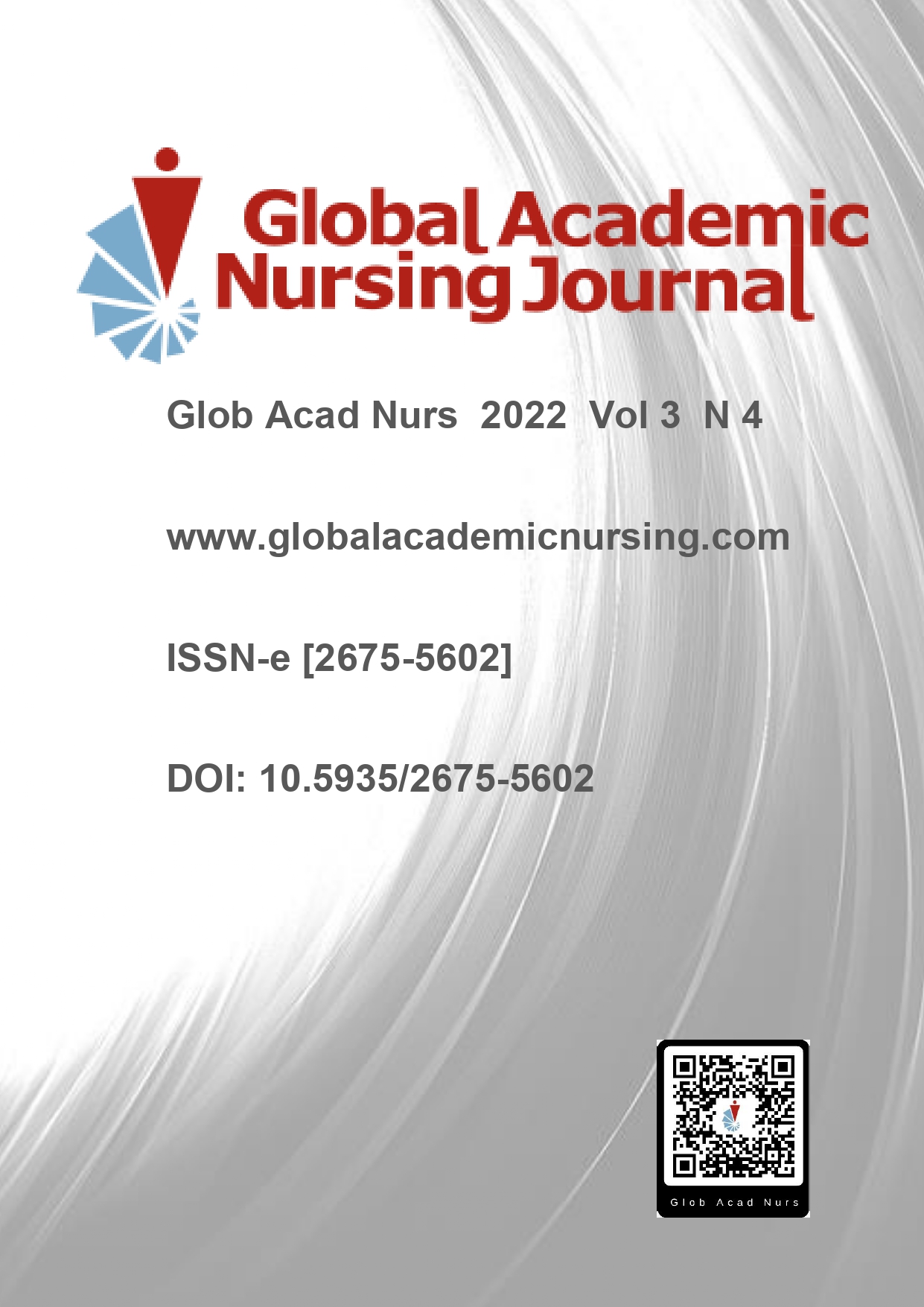Resumo
O objetivo deste estudo foi descrever as características socioeconômico–ocupacionais e clínicas dos pacientes oncológicos em tratamento quimioterápico ambulatorial e avaliar o nível de distress no tratamento quimioterápico, utilizando o instrumento Termômetro do Distress. Este estudo foi descritivo, de corte transversal e abordagem quantitativa, desenvolvido no ambulatório de quimioterapia de um Hospital Universitário, com 30 pacientes oncológicos. Utilizou-se o instrumento Termômetro do Distress, sendo os dados analisados através do Software R (4.0.0). Como resultados, identificou-se que a maioria era homem, média de idade de 59,5 anos, casados, empregados e renda mensal entre 1 e 5 salários-mínimos. O resultado do Termômetro do Distress observou alto grau de sofrimento (>4), com média de 6,3 e desvio padrão de 2,54. As associações entre as variáveis explanatórias e desfecho não foram estatisticamente significantes. Concluiu-se que o instrumento avaliou o nível de distress dos pacientes, sendo ferramenta importante nas consultas de enfermagem em quimioterapia, favorecendo a percepção e o acompanhamento dos fatores estressores.
Referências
Instituto Nacional do Câncer José Alencar Gomes da Silva (BR). Estimativa 2020-2022: estimativa de câncer no Brasil. Rio de Janeiro: INCA.
National Comprehensive Cancer Network. Distress management. Clinical practice guidelines. J Natl Compr Canc Netw. 2003; 1(3):344-74. doi: 10.6004/jnccn.2003.0031.
Nascimento LKAS, et al. Sistematização da assistência de enfermagem a pacientes oncológicos: uma revisão integrativa da literatura. Rev. Gaúcha Enferm. [Internet]. 2012 [citado em 2022 Jan 18] ; 33( 1 ): 177-185. Available from: http://www.scielo.br/scielo.php?script=sci_arttext&pid=S1983-14472012000100023&lng=en. http://dx.doi.org/10.1590/S1983-14472012000100023.
Hinz A, Weis J, Brähler E, Härter M, Geue K, Ernst J. Fatigue in cancer patients: comparison with the general population and prognostic factors. Support Care Cancer. 2020. Sep;28(9):4517-4526. doi: 10.1007/s00520-019-05260-8.
Miot Hélio Amante. (2011) Tamanho da amostra em estudos clínicos e experimentais. J. vasc. [Internet]. [citado em 19 de janeiro de 2021]; 10 (4): 275-278. Disponível em: http://www.scielo.br/scielo.php?script=sci_arttext&pid=S1677 54492011000400001&lng=en. http://dx.doi.org/10.1590/S1677-54492011000400001.
Triola MF. Introdução à Estatística. 10ª ed, 2018, Rio de Janeiro: LTC Editora.
James BR. Probabilidade: um curso de nível intermediário. 2004; 3ª ed, Rio de Janeiro: IMPA.
Araujo LHB et al. Lung cancer in Brazil. J. bras. pneumol. [Internet]. [cited 2021 Jan 18] ; 2018; 44( 1 ): 55-64. Available from: http://www.scielo.br/scielo.php?script=sci_arttext&pid=S1806-37132018000100055&lng=en. http://dx.doi.org/10.1590/s1806-37562017000000135.
Brasil. Lei nº 12.732, de 22 de novembro de 2012. Dispõe sobre o primeiro tratamento de paciente com neoplasia maligna comprovada e estabelece prazo para seu início. Diário Oficial da União. 2012. Disponível em: http://www.planalto.gov.br/ccivil_03/_ato2011-2014/2012/lei/l12732.htm
Donev IS, Ivanova MS, Conev NV. Fast time perception is associated with high levels of anxiety in cancer patients prior to starting chemotherapy. Biosci Trends. 2020; Mar 16;14(1):35-41. doi: 10.5582/bst.2019.01296.
Ferreira Junior J, Ferreira RE, Rangel FMT, Dominici MSAR, Santana TSS, Oliveira DN, Coelho RJC, Bregonci R, Neves MP, Passos AS. Representações sociais dos sentimentos vivenciados pelo paciente portador de neoplasia. Glob Acad Nurs. 2022;3(Spe.2):e271. https://dx.doi.org/10.5935/2675-5602.20200271
Ekman H, Pettersson A, Jakobsson L, Garmy P. A cross-sectional study of distress: A cancer response. Nurs Open. 2020; Apr 1;7(3):850-856. doi: 10.1002/nop2.460.
Carlson LE, Angen M, Cullum J, Goodey E, Koopmans J, Lamont L, MacRae JH, Martin M, Pelletier G, Robinson J, Simpson JS, Speca M, Tillotson L, Bultz BD. High levels of untreated distress and fatigue in cancer patients. Br J Cancer. 2004; Jun 14;90(12):2297-304. doi: 10.1038/sj.bjc.6601887.
Fitch MI, Ashbury F, Nicoll I. Reflections on the implementation of screening for distress (sixth vital sign) in Canada: key lessons learned. Support Care Cancer. 2018; 26(12):4011-4020. doi: 10.1007/s00520-018-4278-y

Este trabalho está licenciado sob uma licença Creative Commons Attribution-NonCommercial-NoDerivatives 4.0 International License.
Copyright (c) 2022 Global Academic Nursing Journal

